Clinical analysis of urine at home on the test strips: the pros and cons

I would like to tell a lot today. And certainly not to turn this post into a review of a can with stripes.
What are your tools for self-control at home?
')
In general, we always insist more likely: all such things should be kept at home, even if there are no prerequisites per se. Moreover, it is not easy to store, but systematically use. A healthy person should have a blood glucose meter, a tonometer, scales, test strips for rapid urine analysis at home - this is absolutely normal.
Systematic self-control is a great thing, which in the future will save health and save money. You definitely will never, for example, walk once a week and take general tests to the clinic, but once a week, pierce your finger in the morning — no problem, once a day you can stand on the scales or have a tonometer in the evening — easy. And so on.
Everything diagnostic, which is very simple to buy and easy to decipher - should be at hand at home.
Decoding results
This is the strangest part, of course. We have already shown how it works with the help of glucometers. The task of modern "gadgets" by and large comes down not to being accurate, but to getting into a certain range of values.
Almost all modern devices have a legalized error, which in principle reduces all work to the principle of a traffic light: green (normal) - orange (border value) - red (above), etc. This is an absolutely normal story.
In this sense, test strips for urine, for example, are the most harmless and honest: in general, any strips that work on the principle of color change (there are a lot of them) are as follows.
Maintain more or less correct accounting data, you can always use only one kind of device. And it certainly does not make sense to recheck one household appliance to another. Otherwise it will be something like this:

Both are accurate.
In general, it is necessary to focus on colors, and not on exact numbers, as practice shows. For example, in the picture above, the sugar level is the same, by and large, despite the variation of one and a half units. Of course, there are such devices where, firstly, accuracy has critical values, and, secondly, which only a specialist can decipher. For example - home ECG apparatus . But even there, if you remember, the basic decryption at the “plus-minus-traffic light” level can be obtained without leaving the computer:
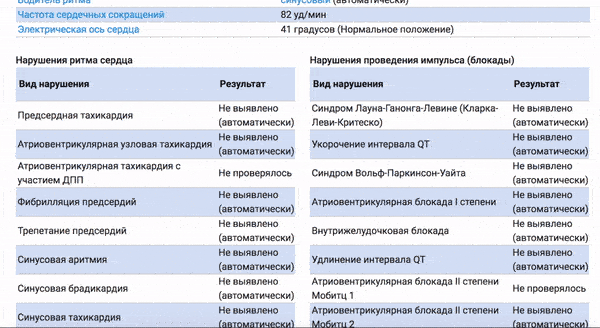
There are almost no such problems with visual test strips.
Oh, that's for sure - a solid traffic light. In general, many test strips (even those that will be discussed) still provide an opportunity to identify specific numbers, but many indicators often fit into the “discovered / not detected”, “many / few / very many” scales, etc. The task of the analysis is to correctly decode the colors - this is the main problem of the visual test.
For some test strips, it is possible to work with special analyzers. These are electronic devices that exclude all subjective errors, correctly recognizing colors. A review of one such we wrote .
But in general, the colors are relatively neutral enough contrasting.
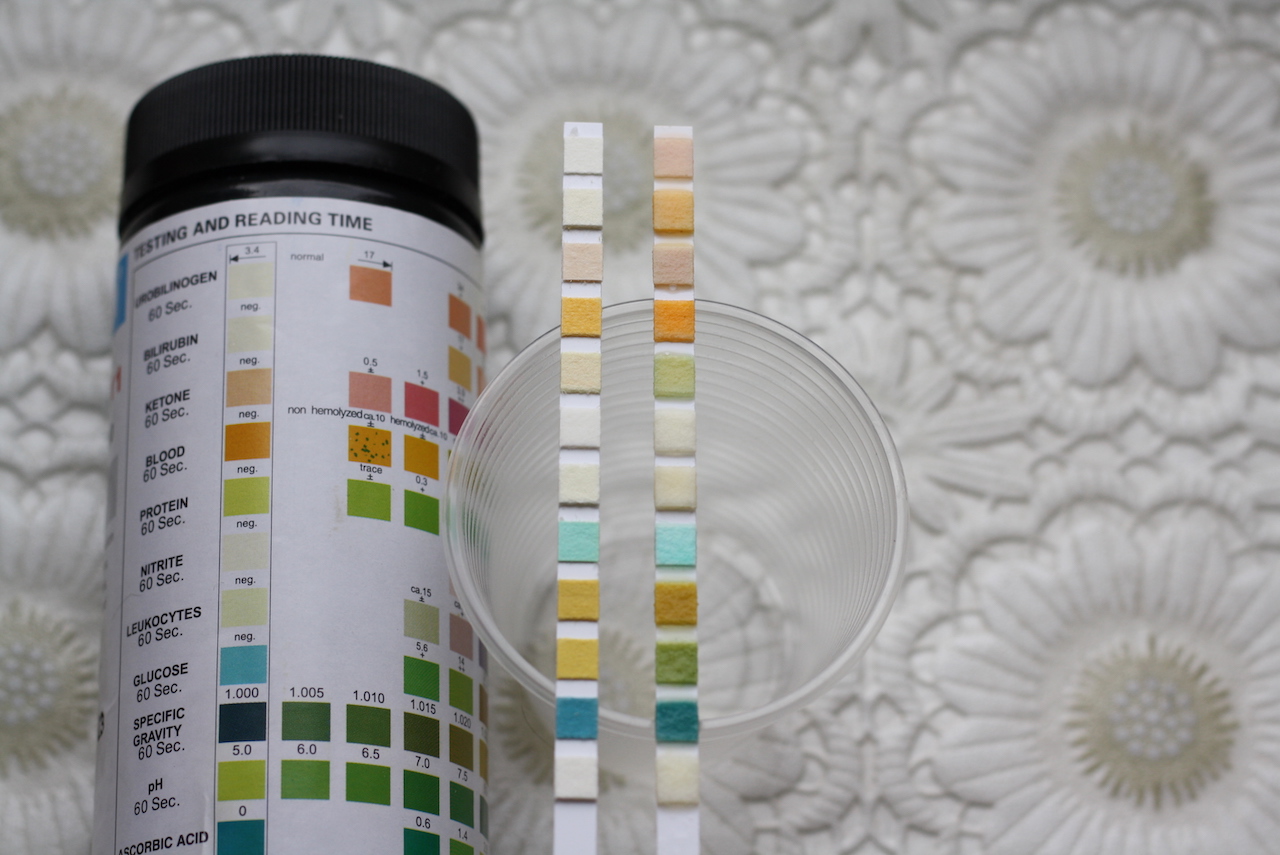
On the left - a clean test strip, on the right - already with analysis
The strips are compared with a scale: as a rule, all data can be read immediately from the bank. The overwhelming majority of the reagent zones in the strips of different manufacturers are made in the same way, so that it is possible to navigate according to some general table.
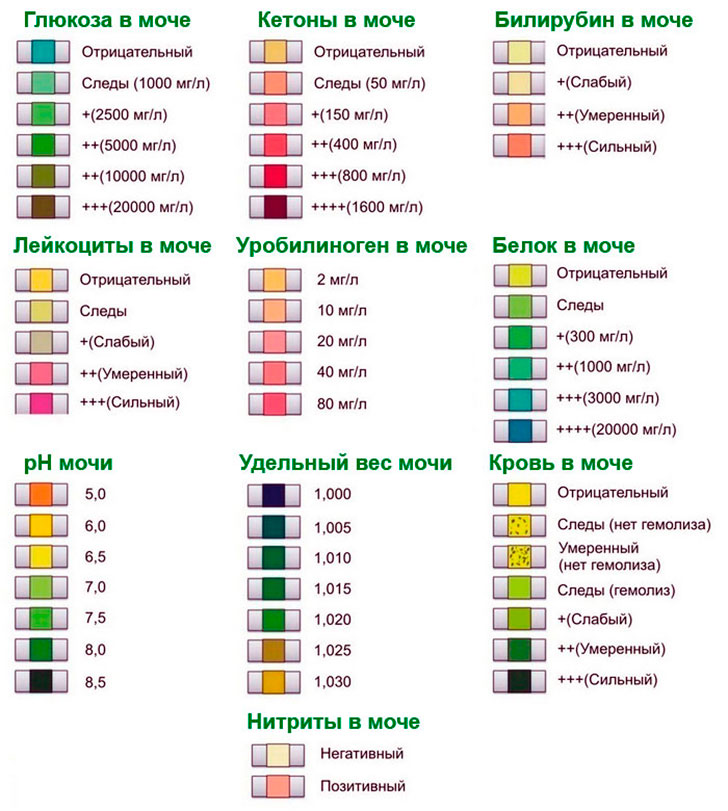
We stopped at the test strips DIRUI - for them the scale looks like this.
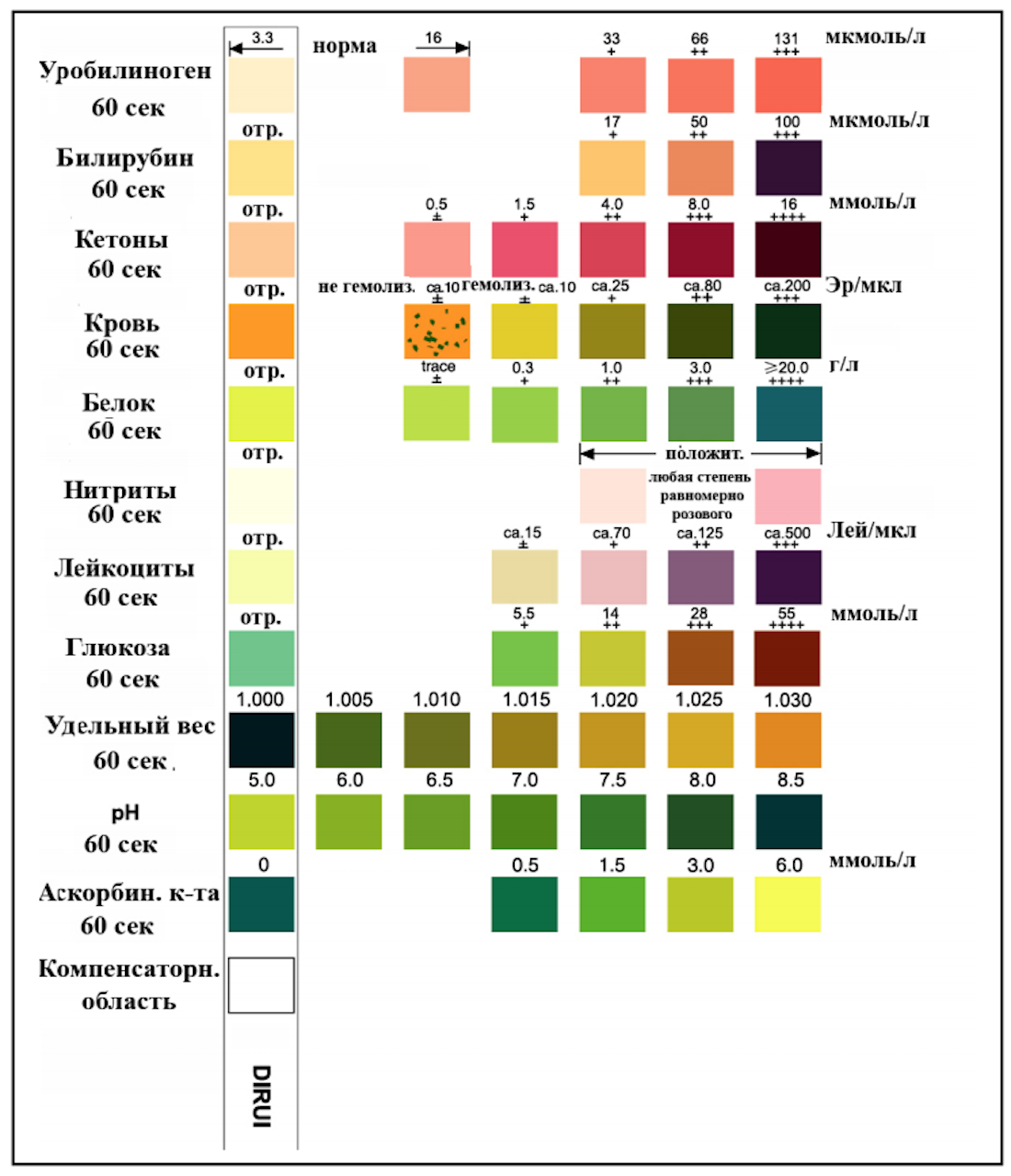
It is applied to the jar:
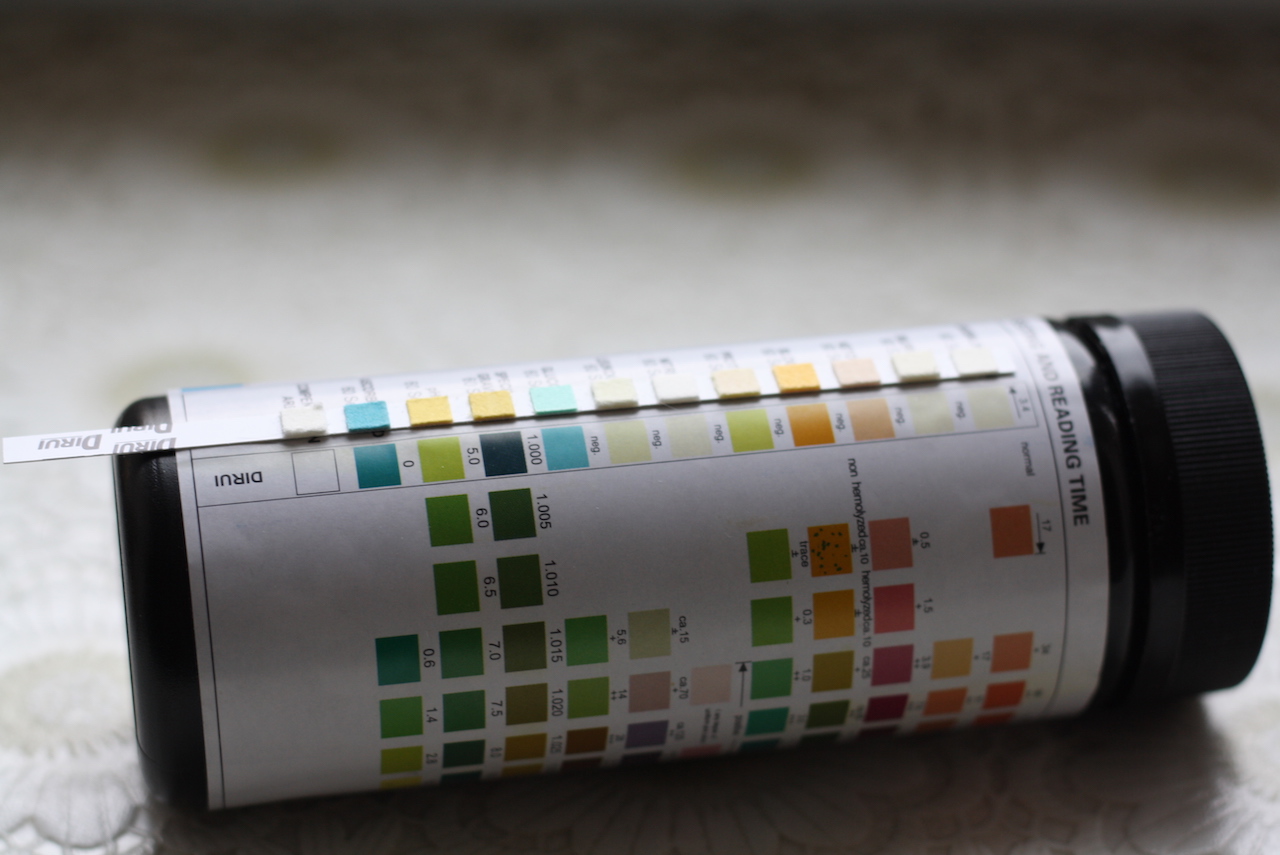
Is the data accurate?
Yes, there are no problems. Moreover, most of the parameters in clinical analysis in general comes down to “discovered — not detected”. Here, rather, it is necessary to say the following: test strips are somewhat inferior in information content. The general analysis on test strips is reduced to 11 metrics - in the clinical sheet - there are slightly more of them. Let's compare.
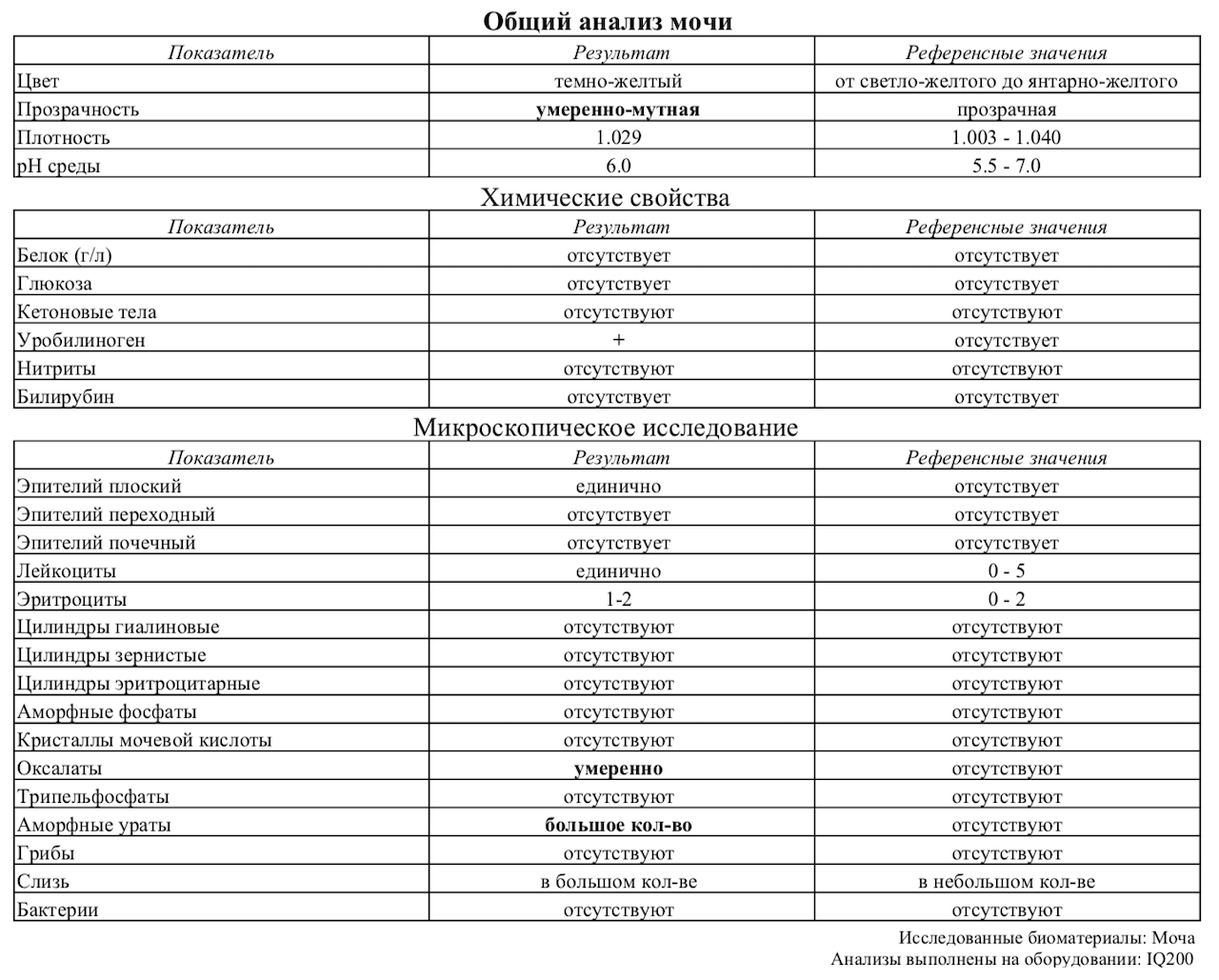
In general, the analysis in the laboratory is carried out in five areas, among which are biochemical, microscopic, microbiological, and so on. It is clear that the data will be slightly more complete. Plus, of course, the color and smell of the strip will not give any answer. But basically, those 11 parameters are in focus:
- Glucose (GLU)
- Bilirubin (BIL)
- Relative Density (SG)
- pH (PH)
- Ketone bodies (KET)
- Hidden blood (BLD)
- Protein (PRO)
- Urobilinogen (URO)
- NITRITES (NIT)
- Leukocytes (LEU)
- Ascorbic Acid (VC)
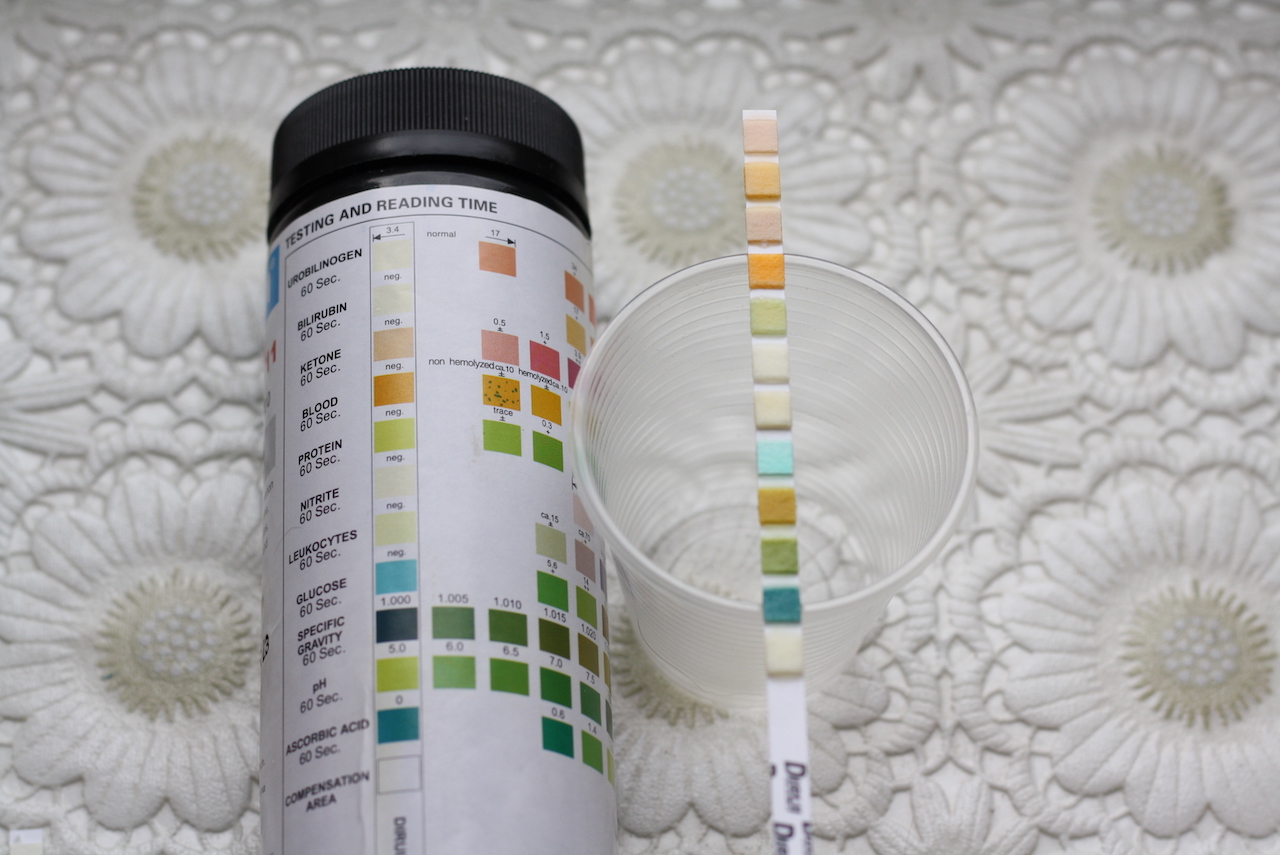
In short:
Relative density (SG). Norm - 1010-1023
Indicator for assessing the ability of the kidneys to concentrate urine, or to perform its main function, where 1023 is the minimum upper limit at which the kidneys are considered healthy. The result on the test strips: 1020 - 1023 by visual inspection .
Urine acidity (pH). Norm - 5.0−7.0
The indicator is often dictated by diet, but when a system deviation from the norm should cause questions. The decline is characteristic of the states of dehydration, prolonged fasting, diabetes. Elevated numbers may indicate renal failure or tumors of the genitourinary system. The result on the test strips: up to 7 .
Protein (PRO). Norm - up to 0.033 g / l
Normally, clinical analysis is not detected, but there may be both occasional and systematic increases. Episodic jumps can be associated with physical exertion, work, stress. Chronic may indicate diseases of the urinary tract (cystitis, urethritis), tumors, pyelonephritis, etc. On the test strips - not detected .
Glucose in the urine (GLU). Norm is absent
With glucose everything is more or less clear. Most often, its presence in the urine indicates diabetes. However, the causes of appearance may be different - from overeating to heart attack. Test strips are not revealed .
Ketone bodies (KET). Norm is absent
Acetone and related substances most often indicate decompensated diabetes. In the urine should not be detected. Distinct concentration can also occur on the background of hard drinking, with acute pancreatitis and in some other cases. Test strips - did not reveal .
Bilirubin (BIL). Norm is absent
Normally, it is not determined, and any positive result may indicate irreversible abnormalities in the liver, from viral hepatitis and cirrhosis to tumors.
On the test strips - controversial value. They show the spread of the norm from negative to light orange (17), which can be read both as a norm and as a “weak presence”.
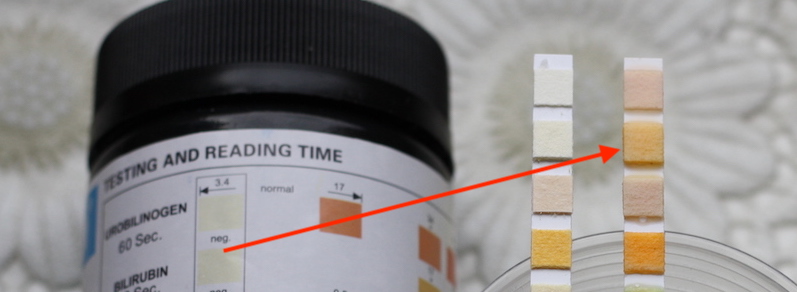
General clinical analysis is not found .
Urobilinogen (UBG). Norm - equal to 17 mol / l or less
The bilirubin derivative normally should give a negative result. A positive analysis may indicate intravascular destruction of red blood cells. Urobilinogen also appears when resorption of hematomas, acute hepatitis, poisoning and liver tumors. It can be detected in various bowel diseases. Test strips - positive. Coincided with clinical analysis .
NITRITES (NIT). Norm - absent
Normally - absent. Most often, a positive analysis indicates the presence of any bacteria that cause inflammation. Test strips - negative.
Blood in the urine (BLD). Norm - absent
It is possible to determine a large amount by eye - the urine will change color. A small amount is not always something dangerous: it may be a consequence of the consumption of berries, exercise or stress. More dangerous pathologies: urinary tract infections, benign / malignant tumors, etc. Test strips - negative .
Leukocytes in the urine (LEU). Norm - single values
Leukocytes are always in the urine, but most often the values are single: in clinical practice they are limited to a range of 0 - 5. Excess rates may indicate cystitis, urethritis, prostatitis. It is also a laboratory sign of urolithiasis. Test strips - within normal limits .
Ascorbic acid (VC). Norm - present
Vitamin C is present in the body. So availability is the norm. Ascorbic acid may be greater, may be less. Actually, the analysis should confirm the presence within the normal range. Deviations can have different reasons. By test strips - is present .
Comparison table: clinical analysis vs strips
| Data | Test strips | Laboratory analysis |
| Glucose | Not | Not |
| Bilirubin | Visually within normal limits | Missing |
| Bilinogen | Yes | Yes |
| Density | Visually from 1.025 to 1.030 | 1.029 |
| pH | Visually 6.5 | 6 |
| Ketones | not | not |
| Blood | Not | Directly nothing to compare |
| Protein | Not | Not |
| Nitrites | Not | Not |
| White blood cells | Fine | Fine |
| Vitamin C | Fine | Directly nothing to compare |
The accuracy and reproducibility of such test strips is quite high. At the same time, it should be noted that. Most often, test strips are sold in packs of 50 and 100 pieces. This is quite a lot, even for a family. But in fact, as such, the actual shelf life over them is not powerful. Even overdue - show reliable data. Spoil there is nothing special. That is, it means that the thing is long-playing.
Speaking of price. Depending on the number of pieces in a package from 50 to 100, it fluctuates by half and the price ranges from 700 to 1500 and more. Test strips, with which we worked, cost 1,500 rubles , in a package 100 pieces.
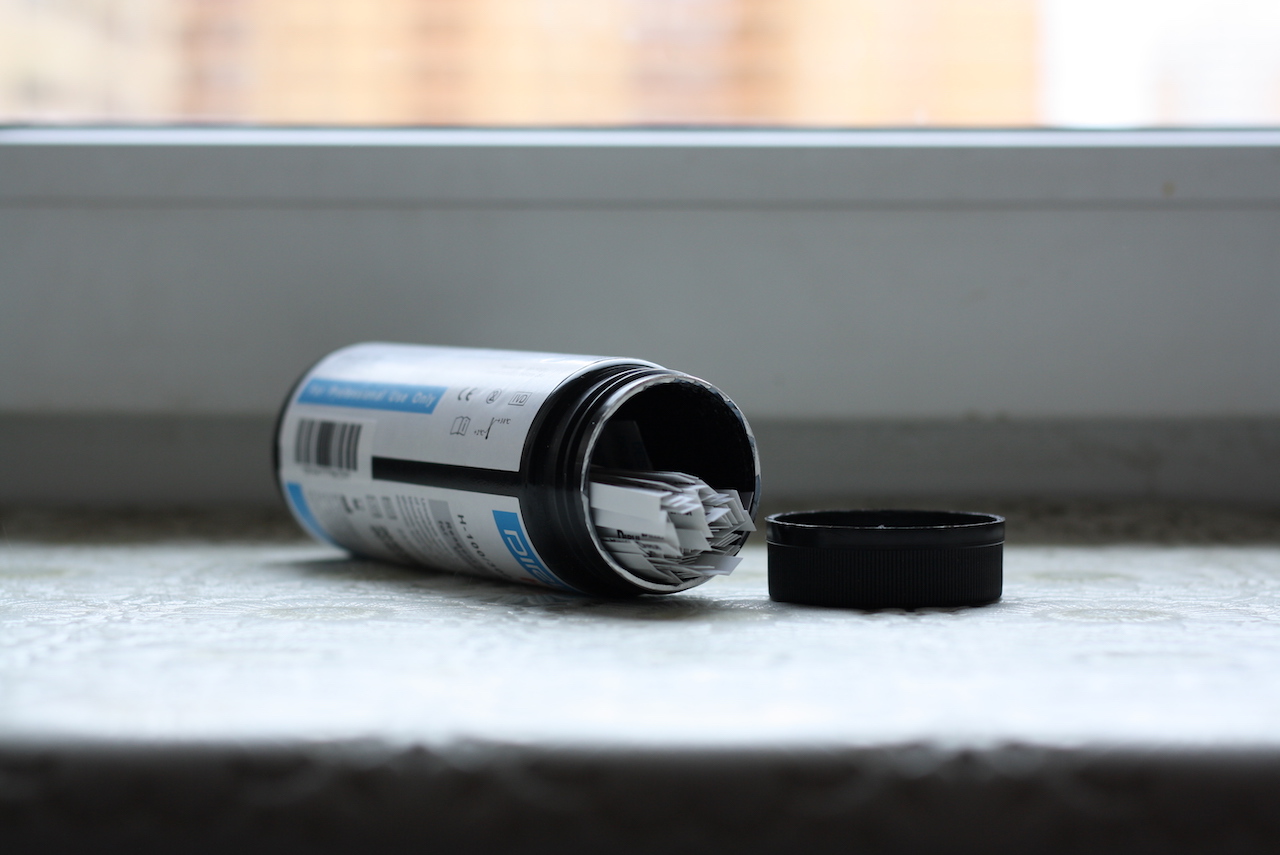
How often do you need to do this?
In general, from the point of view of "payback", such a bank is quite profitable: the average cost of the total analysis in a private clinic is not high, but still it costs the 300 - 350 rubles for one analysis. A family of three or four people will pay for it with five strips.
Where to put 96 more and how often do you need to monitor performance? Strictly speaking, despite the fact that this is the most affordable and cheap way to diagnose, it is certainly not useless. A general analysis can reveal some diseases of the kidneys, liver, diseases of the prostate gland at the asymptomatic stage:
General urine analysis:
- Diagnosis of kidney diseases: nephritis, nephrosclerosis, amyloidosis, urolithiasis, tumors
- Diagnosis of pyelonephritis, diseases of the bladder, prostate gland
- Detection of early signs of disease
Usually appointed:
- The first visit to the doctor is a mandatory study, regardless of the diagnosis of the current or intended
- For diseases of the urinary tract
- Kidney disease
- As an annual routine inspection
- To assess the course of various diseases and evaluate the effectiveness of treatment
- After infectious diseases
In fact, not so often, however, having in your home something like labeled test strips, you can follow the dynamics once a month. This is a prophylaxis from the “not be worse” series There are also groups of users who can and should take such an analysis more often. For example:
For control after operations, in patients with kidney stones during the prevention of re-stone formation, in pregnant women with the threat of infections, gestosis, in children with urinary and ureteral reflux, chronic pyelonephritis, with differential diagnostics, etc.At the same time, all of these patients may be impoverished, for example, patients after operations, therefore, in a quiet, stress-free mode, an analysis at home is one of the best solutions.
In general, having such a tool of self-control is not a stupid decision, and once or twice a month a month for three or four family members, such a bank no longer seems “endless.”
Advantages and disadvantages
Of the minuses of any home introspection self seems the biggest. Here one must be able to draw correct and unsupported conclusions, have a good doctor for consultations.
From the point of view of functionality, there are no negative pitfalls: the stripes accurately determine the indicators, and if there are no problems with distinguishing colors, you will not make any extra conclusions. But the human factor is, of course, always a minus: it didn’t brighten it, it didn’t look at that angle, but still the colors are quite contrasting. Those who do not trust themselves, can once again look at the home analyzer from our review . In Russia, it costs 31,500 rubles , but this is more of a solution for clinics.
The strips are easily bent. This is important because urine collection containers are most often compact in size:

But from this point of view, there will be no problems: you can take a sample evenly and quickly, slightly bending the strip. Of the benefits - timely, quick results on key parameters analyzed with high accuracy. The main thing is to follow the instructions (there are plenty of them in the kit). The main thing is the shelf life of the material - no more than two hours, and the period of visual analysis is 60-120 seconds.
You can buy express strips for the general analysis of urine including in our shop. You can also use the coupon for a 5% discount: DIRUIH11 . Valid until the end of April or until the goods are in stock.
Take care of yourself! And if possible collect a small family geek first aid kit.
Source: https://habr.com/ru/post/448016/
All Articles